Re-drawing equity
Official Entrant: Amanda Álvarez, Ana María Brito, Cruz Criollo, Gonzalo Romer, Herimar Meneses, Santiago Rizo
Type: Community Service
In Caracas, more than 80% of the population lives in areas of informal origin and employment, which we call "Barrios". These “Barrios” are sectors where informality is the norm, lacking basic services, implemented in abrupt topography makes it difficult to connect to the rest of the city and intervened in a way that enhances the risk before natural events. The “Barrio” itself is a different way of making a city where the references of public and private space are transformed in pursuit of their own needs, the large scale of the formal urbanism become outdated.
Because of the lack of roads, public stairs become the street, and is considered as the great public space in the “Barrios”, not only has the function of mobility and connection but represent a new way to occupy this space. The way of occupation and citizen outreach in the “Barrios” generates a significant social links with community ties that can establish standards of living and performing, as well as the participation of community members rather than a requirement is a necessity, because of this depends that any action of any kind could be accepted and appropriated for future users.
Caracas is divided into 5 municipalities; one of them is Municipio Sucre which is formed for 5 parishes, 4 of them concentrated around 2000 “Barrios”, including the José Félix Ribas, considered the largest “Barrio” in Latin America, with a population of approximately 120,000 inhabitants in an area of 96 hectares. The municipality population density is 3.87 inhabitants per m2, and the group of children and adolescents account for 57% of the total population. La Dolorita ranks as the second densely populated parish of Municipio Sucre with 5.88 people per m2, been the urban location for pilot project of our strategies as a built evidence of our premises.
Beyond overcrowded conditions, there is an urban problem associated with the condition of public spaces devoid of quality in popular areas such as formal areas of the city. Caracas has 1.14 per m2 of green space, been 10 m2 minimum approved by ONU-Habitat. In Municipio Sucre, numbers reflect 1.67 m2 of green space per people, according to which there are only 7 parks, considering a population of 33072 children and adolescents for each park, which reflects a high deficit of public spaces, especially if they also serve other municipalities.
Based on public space deficit, it is appropriate to approach La Dolorita, were is practically nil and void, with a tragic rate of 0.01 m2 per people. At this point we ask; will this 90% just have to enjoy the public spaces of the 10% cities? Or is feasible to redesign a public spaces system in this informal city? Can we give to the 90% the benefits that have the 10% in the formal city?
When there is a need for shelter, the inhabitants of the “Barrios” are not conceivable planning of public spaces, are concerned solve their problems of habitat .Then is necessary to understand these phenomena to develop a feasible solution within a complex society, redrawing rapid vision of public space conformed by stairs, residual spaces, underutilized spaces and edges, producing a proposal that encourages and motivates to create change in “Barrios”.
Because is not feasible to repair house per house, the most viable solution is through interventions of quality public space, so the resources are reallocated to equity and justice, expanding the impact of the intervention to a larger group of people.
Elements of design strategies were defined according to guidelines of feasibility and sustainability analysis, assessing the physical, economic, environmental and social concept development deployments. The problem of water scarcity in these communities instead of being a problem constituted a key element for its durability. The use of vegetation was low; we rely on the colorful murals to enter the green. There was proposed a line of furniture and standardization of materials depending on maintaining short and long term, were selected high quality materials to address the issue of equity shares and their durability over time, adapted to a low budget without compromising quality and design level. Agreements were signed between the municipality and communities; where they became responsible for maintenance.
Based on the complexity of needs of slum dwellers, lack of government plans, and the immeasurable capacity of universities to generate knowledge, its generates a line of thought, where teachers and students developed an alternative Community Service experience, collaborating in setting up a network of public spaces as pieces that in group and individually favored the formation of the city with integration of informal sector in the 10% cities.
 Share / Save
Share / Save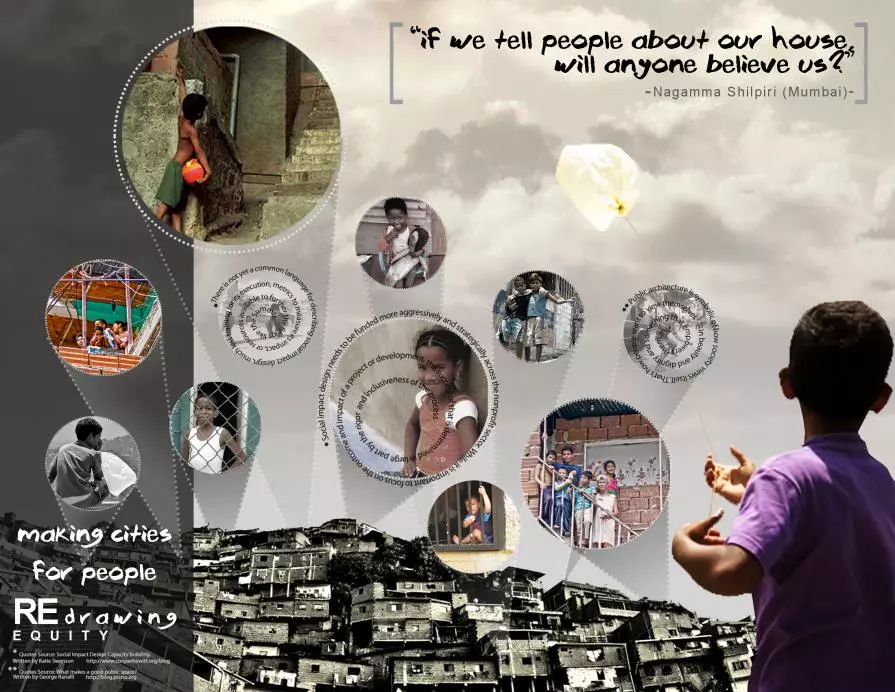

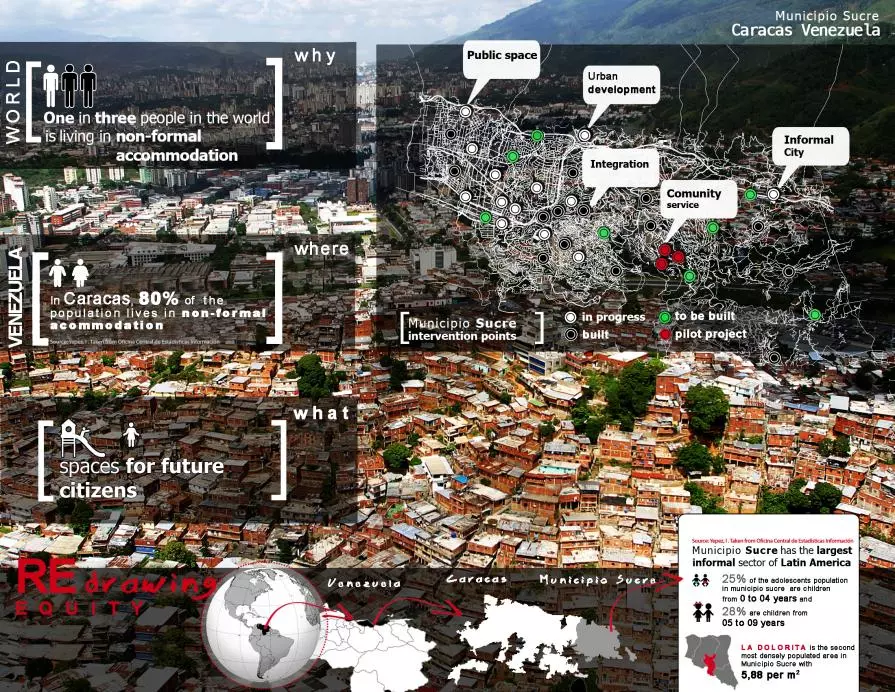

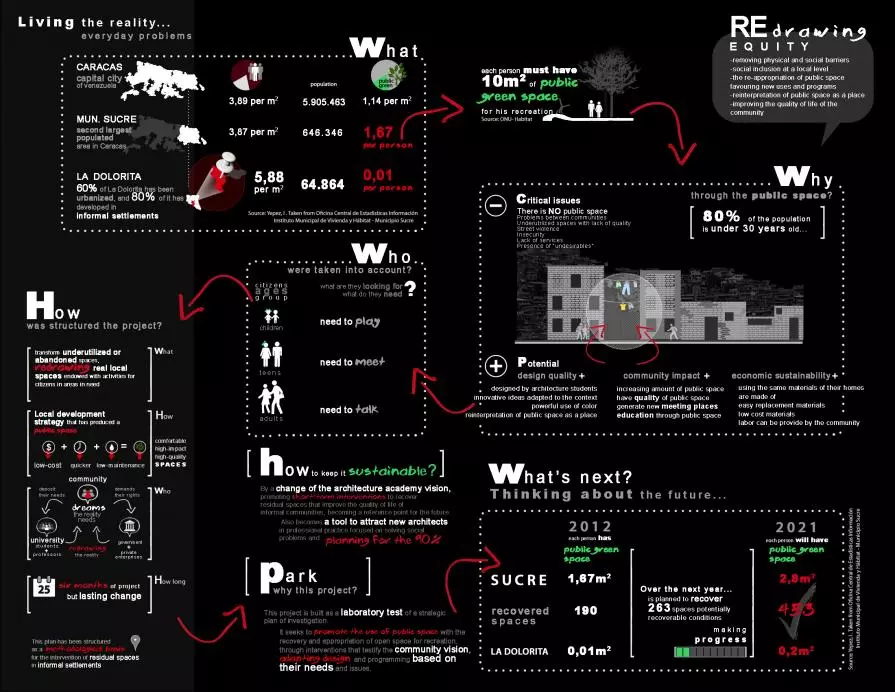
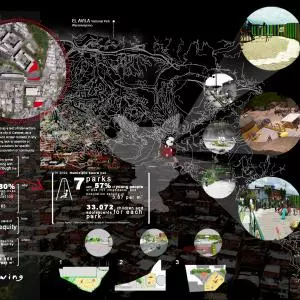
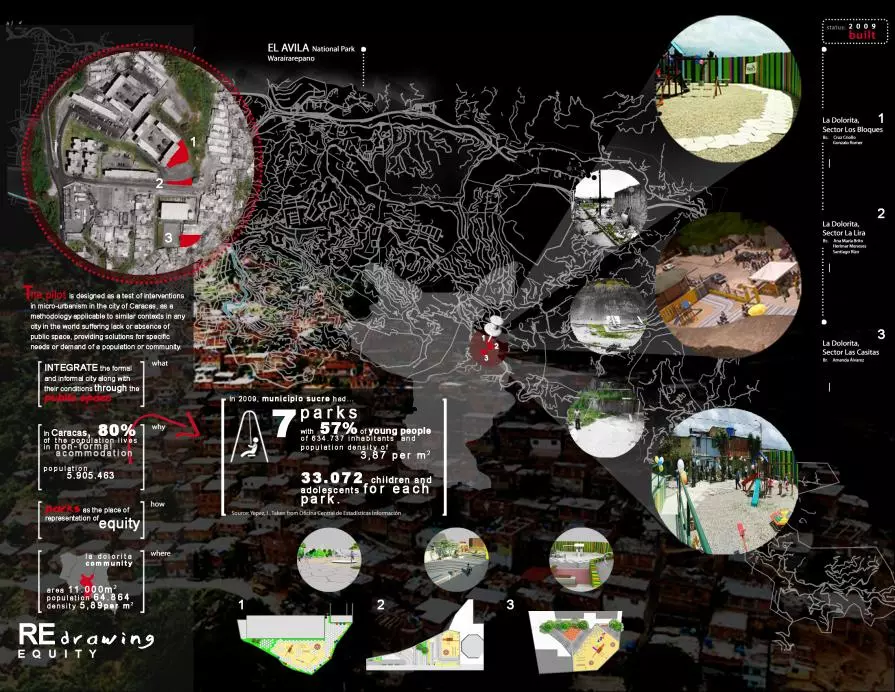




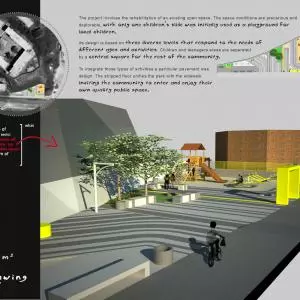
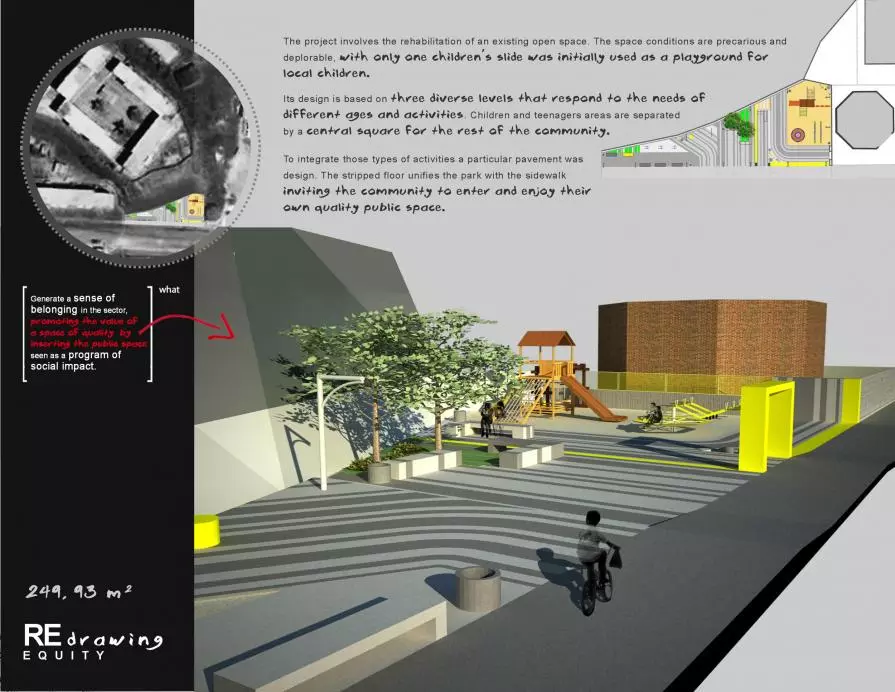

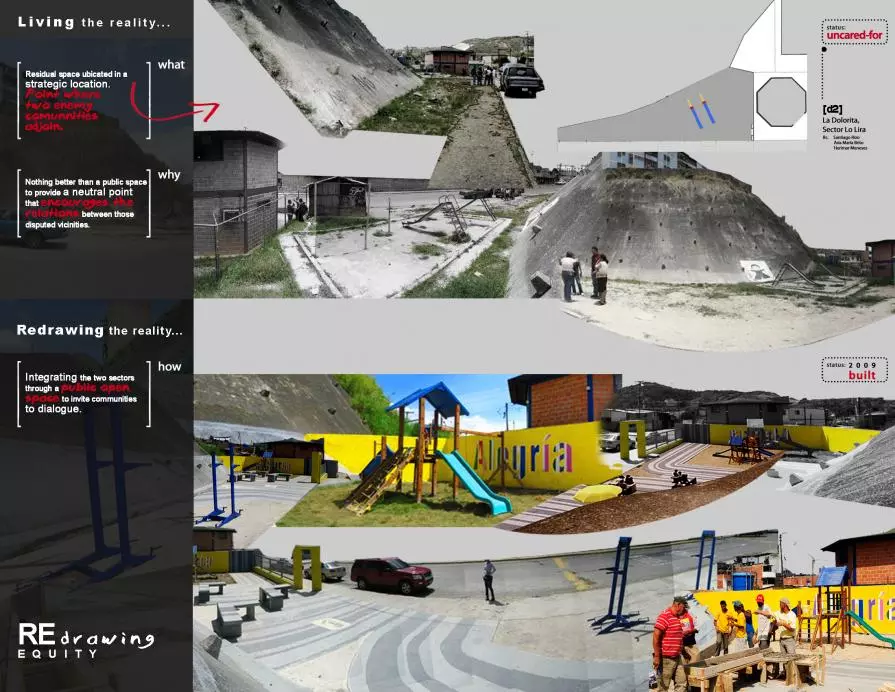

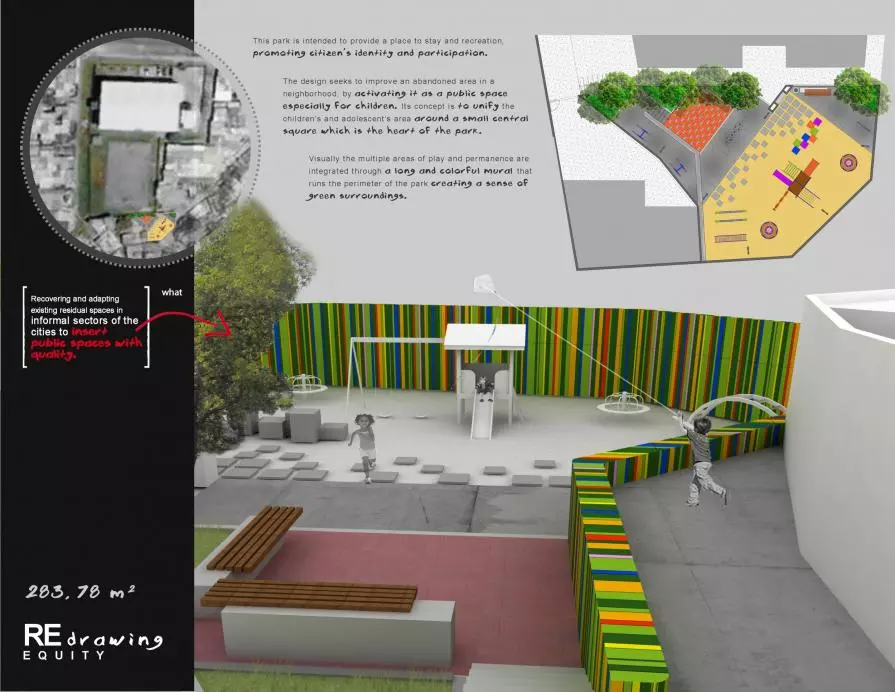










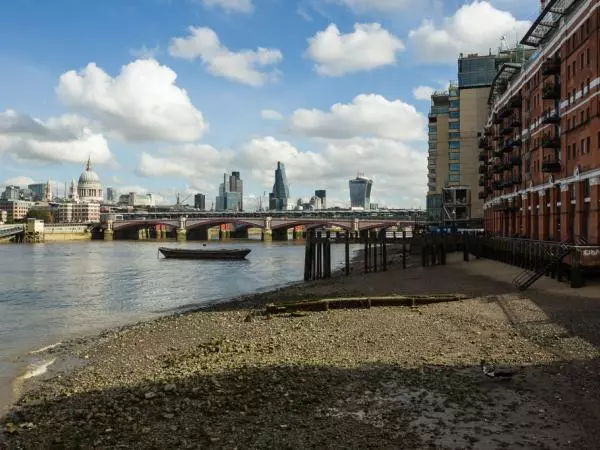
Comments 0
Say something